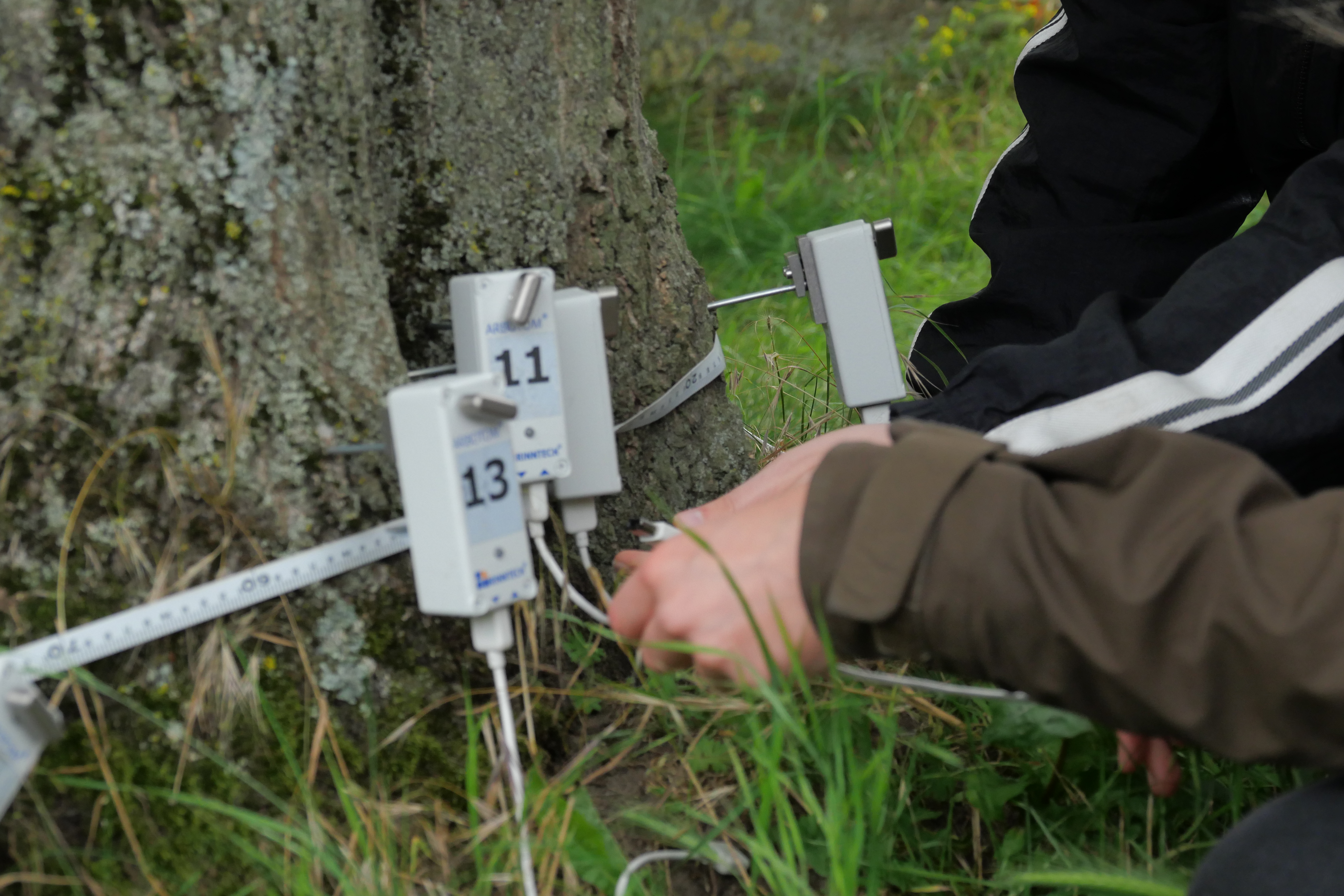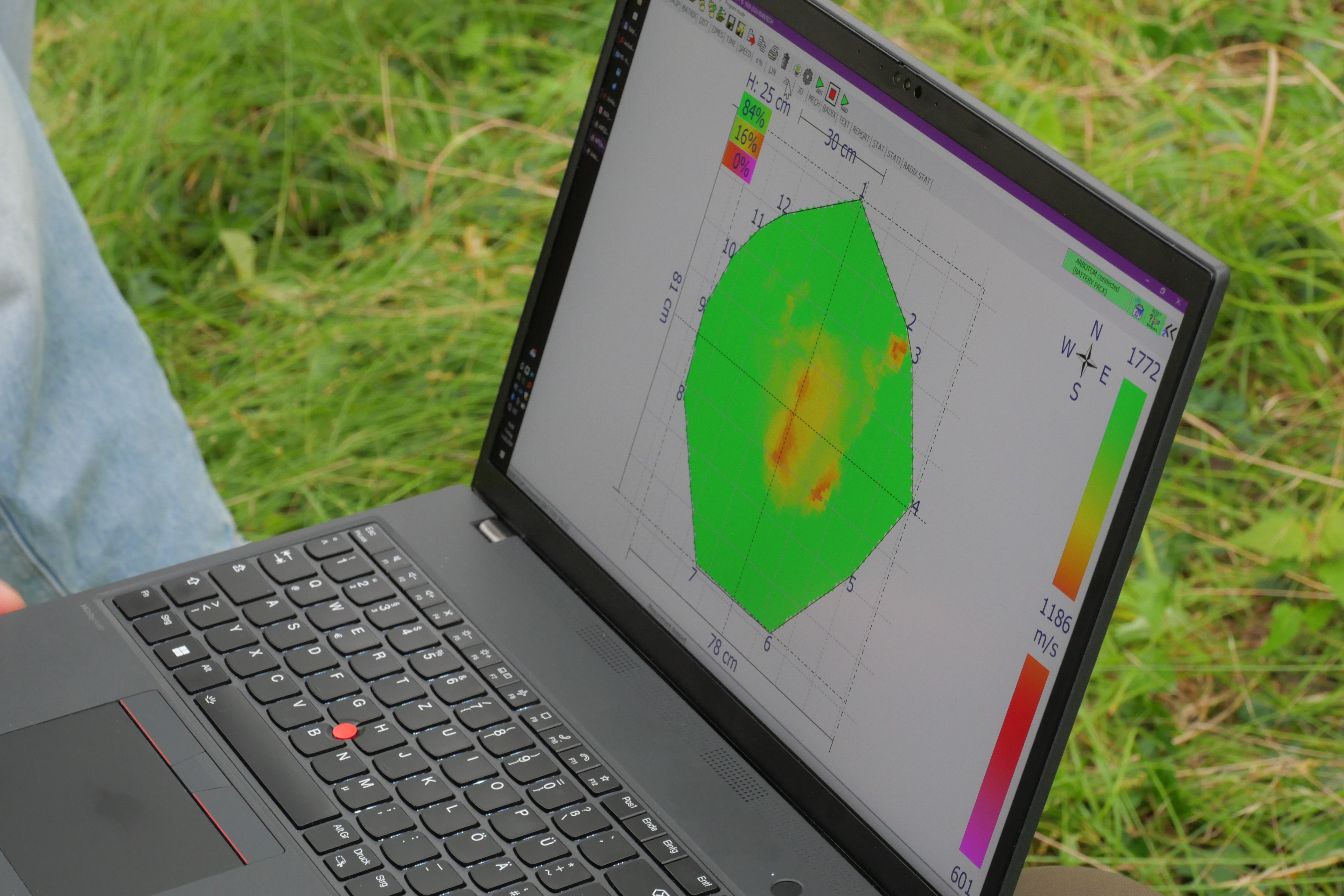ARBOTOM training: Workshop on sonic tomgraphy on trees at KIT
On June 14, an instructive ARBOTOM training course took place at the Karlsruhe Institute of Technology (KIT). Frank Rinn, Managing Director of Rinntech Metriwerk GmbH & Co KG, was on hand to give participants a comprehensive introduction to the sonic tomography of trees.
The event was aimed at those involved in the URBORETUM project, Master's students of geoecology who will be carrying out research projects with the ARBOTOM, and a Master's student of forestry. The workshop began with a theoretical introduction to sonic tomography and the analysis of internal stem defects. Frank Rinn explained that sonic tomography cannot show the actual condition of the wood in the cross-section, but makes the load-bearing parts visible. This allows the relative loss of load-bearing capacity due to defects to be determined.
After lunch together in the university canteen, the practical part of the training followed. The participants had the opportunity to use the ARBOTOM instrument on two trees on the campus: a large tree of heaven (Ailanthus altissima) and a small-leaved linden tree (Tilia cordata).

The sensors were first attached to the lower part of the trunk in the correct order. After a short test, the measurement could begin. The sensors were tapped one after the other with a hammer to measure the sound propagation inside the trunk. The software created an image based on the speed of sound propagation, which revealed areas with significantly reduced speed, indicating ingrown bark or potential damage.

The ARBOTOM training gave all participants valuable insights into sonic tomography and taught them how to use the instrument in practice. The combination of theoretical knowledge and practical application enabled the students and project participants to develop a deep understanding of the method and use it effectively in their future research projects.

